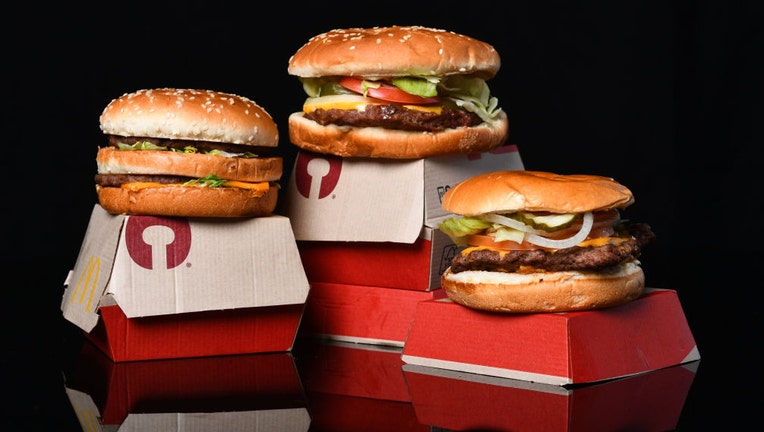Fast food prices continue to rise. They're the most expensive in this Bay Area city

FILE-Images of burgers from McDonald's, Burger King and Wendy's. (Katherine Frey/The Washington Post via Getty Images)
SAN FRANCISCO - Fast food has historically been considered a cheap option for people on a tight budget, but a new analysis suggests those meals are becoming increasingly out of reach for many Americans, with San Francisco ringing up the highest prices in the nation.
By the numbers:
The findings by online lending marketplace LendingTree found that in the City by the Bay, the average flagship fast food meal costs $13.88.
Sacramento's prices were also near the top in the nation, according to the analysis, which put the average in the state’s capital city at $13.21.
And San Jose ranked in the top ten most expensive, with the average cost of a flagship fast food meal coming in at $13.03.
At the bottom of the list was Columbus, Ohio, with the cheapest average of $10.01.
Across the 50 largest metros that LendingTree looked at, the average came in at $11.56.
LendingTree came up with its numbers by selecting the five of the most identifiable national fast food chains and its flagship meals. They were:
- Burger King-Whopper Meal (medium)
- Chick-fil-A-Sandwich Meal
- McDonald’s-Big Mac Combo Meal
- Taco Bell-Crunchwrap Supreme Combo
- Wendy’s-Dave’s Double Combo
Dig deeper:
Like everything else, fast food prices have been driven up by inflation.
And once considered an affordable way to grab a meal, a LendingTree survey found a majority of respondents said that they felt "sticker shock" by how much they needed to shell out for a fast food meal.
A solid majority also said they now regard buying fast food a "luxury."
Fast food workers can’t afford meals they serve
For those who work in the industry, LendingTree found, employees are having a difficult time making ends meet.
That may be no more evident than in San Jose, which LendingTree identified as the top U.S. metro where fast food workers need to work more to buy a typical fast food meal.
"In an ironic twist, fast food workers can’t afford to eat the meals they serve," LendingTree researchers said. "San Jose fast food workers face the highest percentage gap in minutes, working 178.9% longer than their neighbors to earn enough to cover a fast food meal."
SEE ALSO: In-N-Out Burger removes artificial coloring from these products
San Francisco had the ninth-biggest disparity. Fast food team members there need to work about 132% longer than their counterparts in other cities to buy a typical fast food meal.
The findings show a wage disparity across all 50 metros LendingTree analyzed.
"Even in Fresno, where the percentage gap is smallest, they work 66.7% longer than people earning the average area wage to pay for the same food," researchers noted.
They said that even those who worked full-time struggled to earn a living wage and cover basic living expenses.
"Fast food employees, once hailed by the U.S. government as essential workers, face the harsh reality that they can’t afford to make ends meet in the nation’s largest metros," LendingTree said, also noting that for consumers, "Fast food meals with prices in the single digits may soon be a thing of the past."

